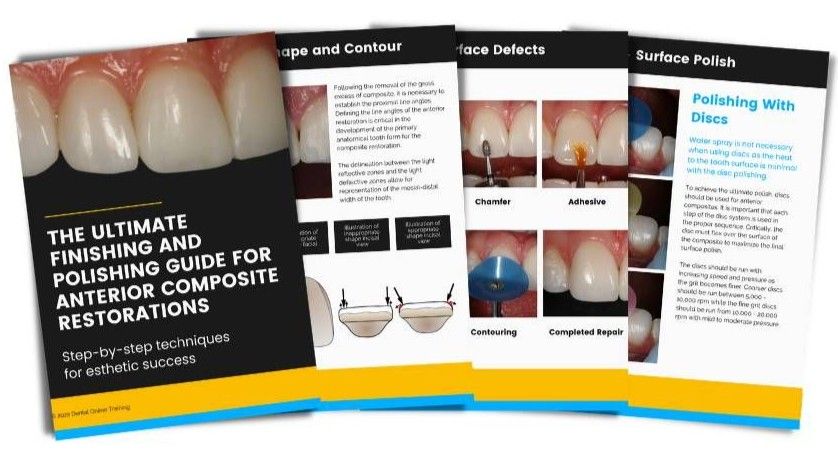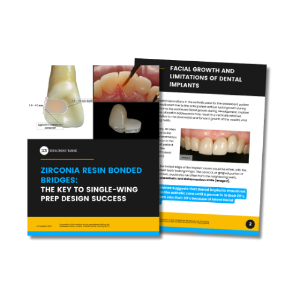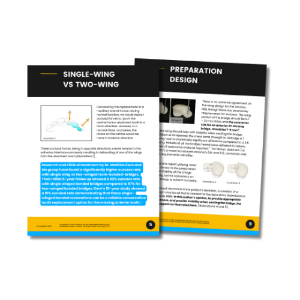What's inside?
CHAPTER 02
Which Teeth to Use for Abutments
Zirconia Resin Bonded Bridges: The Advanced Bridge Technique
Frequently asked questions
What are the advantages of using single-winged ZRBBs in single tooth replacement situations, and when might two-winged ZRBBs be more appropriate?
Single-winged ZRBBs are advantageous in most single tooth replacement scenarios due to their simplicity and conservative nature. They involve minimal tooth reduction and are typically suitable when replacing a single tooth. However, two-winged ZRBBs may be more appropriate when additional restorative treatment is needed on anchoring teeth or when splinting is necessary due to tooth mobility. They offer enhanced stability and support in such cases.
How can zirconia substructures be extended to support direct composite restorations for esthetic and functional improvement of abutment teeth, and what materials are commonly used for this purpose?
Zirconia substructures can be extended on abutment teeth, such as the central incisor and canine, to support direct composite restorations for esthetic and functional enhancement. Commonly used materials for this purpose include direct composite materials like Renamel Hybrid, Renamel Microfill, and Renamel Gingafill from Cosmedent, Inc. These materials are applied over the bonded ZRBB framework to create natural tooth form and color, improving the appearance and function of the abutment teeth.
Can you explain the considerations for posterior tooth replacement with zirconia bonded bridges, including connector size, retainer design, and the need for more extensive tooth preparations?
When replacing posterior teeth with zirconia bonded bridges, it's essential to consider increased connector size, ranging from 12-16 mm squared, to withstand the higher occlusal forces in this area. Retainer designs should also provide additional surface area to offset the increased occlusal and masticatory forces. Unfortunately, more extensive tooth preparations may be necessary to accommodate the added thickness of restorative materials and ensure the long-term success of the bridges.
What precautions should be taken when treating adolescent patients to minimize the removal of tooth structure during the restorative process?
Efforts should be made to minimize the amount of tooth structure removed when treating adolescent patients. Conservative approaches are crucial. Dentists should carefully plan and execute the restorative process, considering the long-term implications for the young patient's oral health. This may involve using less invasive techniques and materials whenever possible to preserve natural tooth structure.
What are the key factors for success in using resin bonded bridges, and how do proper preparation design, material selection, and adherence to cementation and adhesive protocols contribute to long-lasting prosthetic replacements for missing anterior teeth?
The key factors for success in using resin bonded bridges include meticulous preparation design, appropriate material selection, and strict adherence to cementation and adhesive protocols. Proper preparation design ensures a secure fit, while selecting suitable materials ensures durability and esthetic results. Adhering to established cementation and adhesive protocols is critical to achieving long-lasting prosthetic replacements for missing anterior teeth. Strict adherence to these protocols will lead to conservative, esthetic, and durable outcomes.
Zirconia Resin Bonded Bridges: Single-Wing Prep Design Success

Master advanced zirconia resin bonded bridge design for optimal esthetic results.



